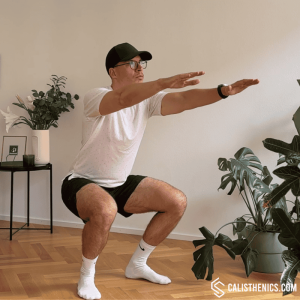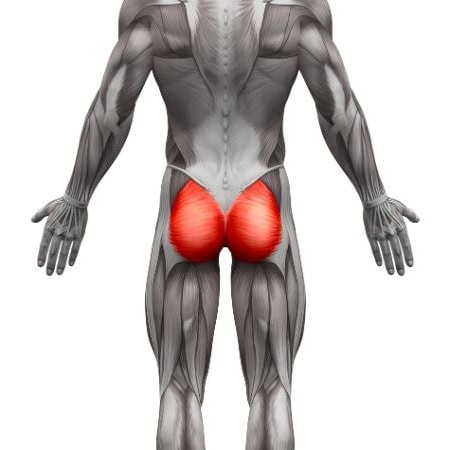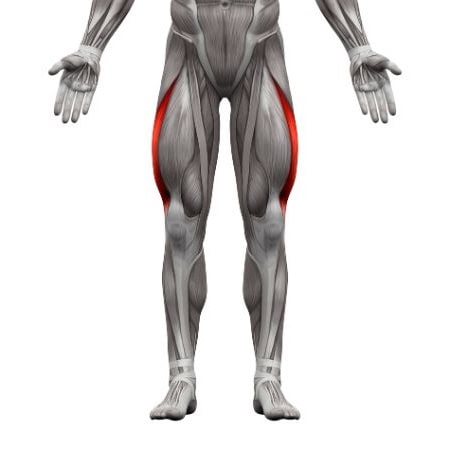Squat Hold
How to do Squat Hold?
The squat hold is an isometric exercise where you hold a squat position for a set period of time. This exercise builds strength and endurance in the lower body, particularly in the quadriceps, glutes, and hamstrings. Since you remain in a static position, it also challenges your stability and mental toughness. Squat holds are a great addition to any workout routine as they help improve muscular endurance and enhance the ability to maintain proper posture during dynamic movements.
Steps to Perform the Exercise:
- Set Your Feet: Stand with your feet shoulder-width apart, with your toes slightly pointing outward.
- Engage Your Core: Tighten your core muscles and pull your shoulders back to maintain a straight and upright posture.
- Lower into a Squat: Push your hips back and bend your knees as if sitting into a chair. Lower your body until your thighs are parallel to the floor or as low as your mobility allows. Keep your knees aligned with your toes.
- Hold the Position: Stay in this squat position, keeping your chest lifted and back straight. Engage your glutes, quads, and core to maintain stability.
- Maintain the Hold: Hold the squat for a set amount of time, usually between 20 seconds to 1 minute, depending on your fitness level.
- Stand Back Up: After completing the hold, push through your heels to stand back up and rest before repeating the hold if necessary.
Tips for the proper execution of Squat Hold
Maintain an Upright Posture: Keep your chest up and back straight during the entire hold. Avoid letting your lower back round, which can put strain on the spine.
Knee and Toe Alignment: Ensure that your knees track over your toes and do not collapse inward. Your knees should be at a 90-degree angle or slightly less.
Keep Your Heels Down: Ensure that your weight is distributed evenly across your feet, with your heels pressed firmly into the ground. You should be able to wiggle your toes slightly.
Engage Your Core: Tighten your abdominal muscles to help stabilize your lower back and maintain proper form throughout the hold.
Breathe Consistently: Don’t hold your breath! Breathe deeply and consistently to stay relaxed and focused.
Muscles worked when doing Squat Hold
- Primary Muscles: Quadriceps, hamstrings, glutes.
- Secondary Muscles: Calves (gastrocnemius, soleus), core (rectus abdominis, obliques, transverse abdominis), lower back (erector spinae).
Primary Muscle(s):
Secondary Muscle(s):
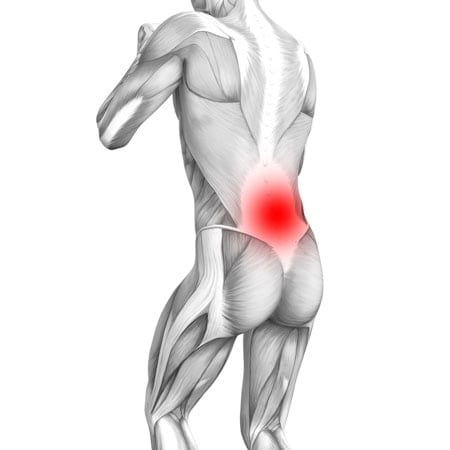
Lower back
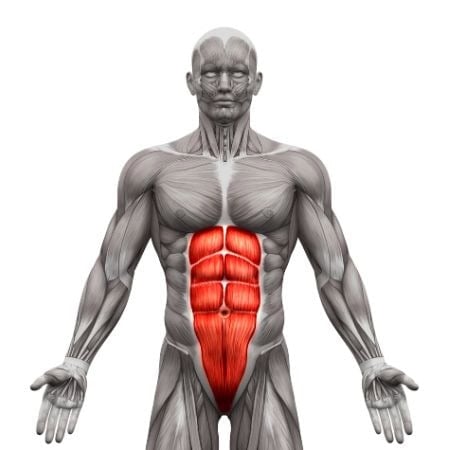
Abdominal
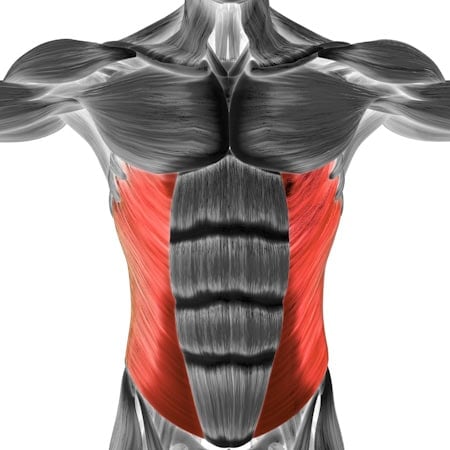
Oblique
Equipment needed for Squat Hold
No equipment needed for this exercise.
Adjust the difficulty of Squat Hold
How to make Squat Hold harder?
How to make Squat Hold easier?
How to make Squat Hold harder?
To make Squat Hold harder:
-
Increase Hold Time: Extend the time you hold the squat to 60 seconds or longer for more of a challenge. Advanced athletes can work up to 2-3 minute holds.
-
Add Weight: Hold a dumbbell or kettlebell in front of your chest (goblet-style) or place a barbell across your shoulders to add resistance and increase difficulty.
-
Add Pulses: Perform small pulses at the bottom of the squat while holding the position to increase muscle engagement and challenge your endurance.
-
Single-Leg Squat Hold: For an advanced variation, try lifting one foot off the ground and holding the squat on a single leg. Alternate legs between sets.
How to make Squat Hold easier?
To make Squat Hold easier:
-
Decrease Time: Start by holding the squat for a shorter duration, such as 10-20 seconds, and gradually increase as you build strength and endurance.
-
Higher Squat Position: If you’re new to the exercise or lack mobility, you can hold the squat at a higher position (slightly above parallel) to reduce the intensity.
-
Use a Wall for Support: Perform a wall squat by leaning against a wall with your back, which helps provide support while still engaging your lower body muscles.

